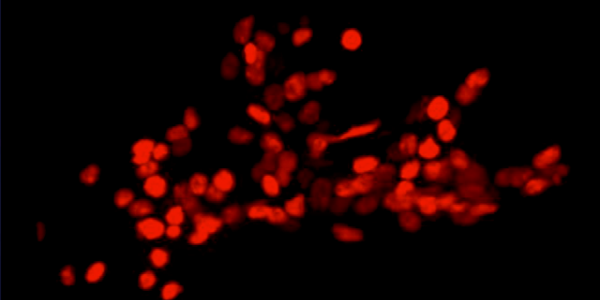Probing Neural Dynamics and Behavior of a Simple Animal
How does a brain's neural network process signals, represent information, and generate actions? We take a reductionist approach and tackle this question in a simple animal, the small roundworm Caenorhabditis elegans. The nematode C. elegans has only 302 neurons yet, like
any organism, it must process information to find food, identify mates and evade predation. We developed a suite of optical instruments to non-invasively measure and manipulate the animal's neural dynamics, even as it crawls. We optically read out, turn on or turn off individual neurons' activity throughout the brain using calcium imaging and optogenetics while simultaneously measuring the animal's posture dynamics. These measurements allow us to find relations between sensory signals, neural activity and behavior.
I will share results from two recent investigations. The first explores how the animal's locomotion is represented in the brain. We perform "mind-reading" and show that a linear combination of activity from a population of neurons is sufficient to decode the animal's velocity and body posture. Two distinct subpopulations of neurons are informative for decoding velocity and pose, and activity of different neurons within those populations are relevant for decoding different instances of behavioral motifs. The second investigation explores how the animals response to a sensory stimuli drives locomotion. In that work we find evidence that the animal integrates a mechanosensory touch stimulus with its own behavior state in deciding on an action, and we identify areas in the neural network where these streams of information may combine.
Register for Colloquium
